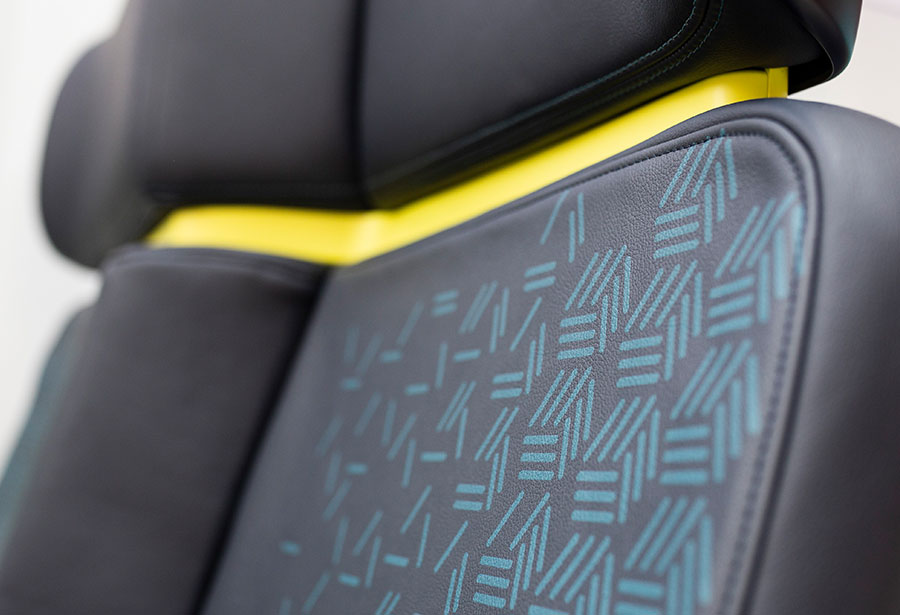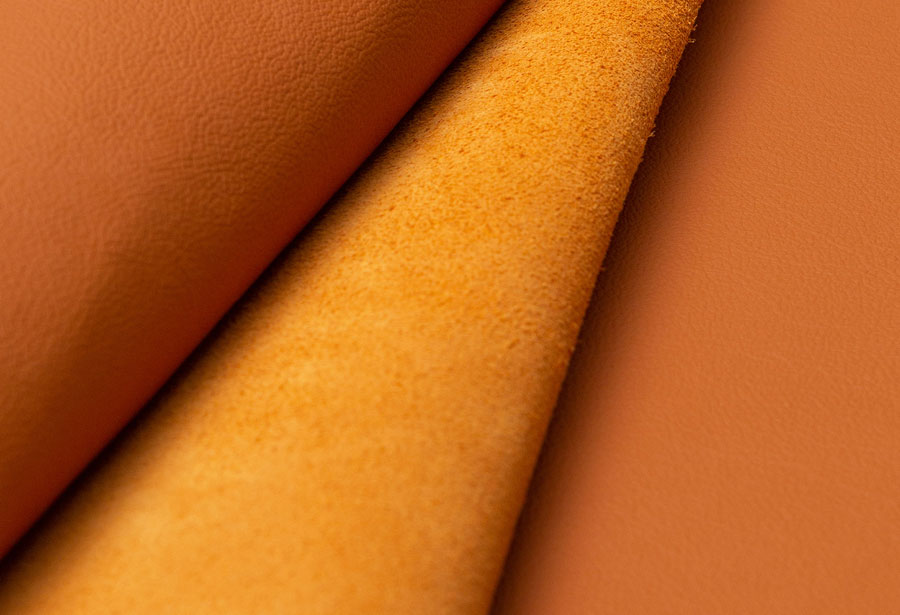What sets Muirhead’s full-seat Fire Resistance Lab apart?
What sets Muirhead’s full-seat Fire Resistance Lab apart?
Dr Tony Cash (CChem, CEng), a distinguished and independent fire safety expert and one of only a small number of Institution of Fire Engineers accredited Chartered Engineers operating in the sector, interviews Muirhead’s Innovation and Technical Manager, Stephen Hems, who holds a master's degree in Fire Safety Engineering. Tony also shares his thoughts.
What were the strategic motivations and considerations that prompted Muirhead to invest in the establishment of the Fire Resistance lab?
In 2018, the team at Muirhead had an exciting concept to establish a cutting-edge lab where we could put greater focus on testing full seats to offer a greater degree of support in the development of new seat designs. Despite the pandemic slowing down many businesses, we decided to continue working on this project because we knew it would revolutionise the rail seat industry.
To bring this idea to life, we had a significant investment in a new lab with the capability to test to ISO 16989, a requirement for EN45545 to supply. Simultaneously, we started a "Cut and Sew" service and a factory in China to manufacture seat covers. These strategic moves indicate that Muirhead is no longer just a leather supplier; our aim is to assist every player in the supply chain who is involved in making train seats from start to finish.
At Muirhead, we intend to collaborate with the supply chain to support our customers from the concept stage to delivery. We want all parties involved to proceed with total performance and regulatory confidence in their leather and seating products. Our goal is to support our customers in designing, creating and developing new rail interiors. Part of this is demonstrating that their leather and seats comply with all safety regulations and work seamlessly.
What is the significance and rationale behind conducting comprehensive full-seat testing?
Our lab is equipped with cutting-edge technology that allows us to test and ensure the safety of our new train seat designs before selling them. This is a significant advantage as it enables us to create new seats much faster than before.
Currently, we send seat samples to test externally with companies that have specialised fire testing equipment. This limits the R&D capability as the results typically take about six to eight weeks from planning to receipt of the result. However, with our "furniture calorimeter," we can test our new leather seats whenever we want and get the results within a few hours instead of months.
Whilst bench-top fire tests are a powerful aid in development, full-seat fire testing is essential. There are numerous factors that can impact the flammability behaviour of a seat, including design, stitching, seat geometry, armrests not to mention material selection, various fire barriers, foam types, full leather, and part leather.
This investment and innovation will drastically reduce the turnaround time for new product flammability testing from two months to just four hours. Conducting testing in-house gives us the ability to gather more information and data to understand the key mechanisms that impacted the test result, making not only the test results quicker but also the development process more robust. Customer confidence is a key output of this equipment. Using such advanced technology in product development further strengthens Muirhead's position as the leading expert in fire retardant leather.
What sets Muirhead’s Fire Resistance LAB apart, making it distinctive and unique?
Previously, we used to conduct tests on bench-scale fire instruments such as the cone calorimeter and smoke density chamber, and the full seat test was conducted further down the supply chain. This is standard practice. It often, however, leads to a scenario where the materials have met the bench scale test, but the full seat does not comply with the requirements, leaving frustration and limiting design possibilities.
Dr Tony Cash concluded: “Muirhead’s new equipment, designed to replicate a newspaper fire as written in the EN16989 standard, has revolutionised their testing capabilities. Rather than relying solely on bench-scale fire instruments, such as the cone calorimeter and smoke density chamber, which is common practice, they now have an exceptional tool at their disposal. These pioneering capabilities are rare for a tannery, with very few such tools available in Europe, let alone the UK. This innovation ensures more reliable full-seat testing, eliminates frustrations, and expands design possibilities.”
Steve, could you please provide insights into the operational process of the testing procedures?
Our advanced measuring equipment can gather accurate data about the fire and its behaviour. During a test, we will be precisely gathering data every couple of seconds on oxygen, carbon dioxide and carbon monoxide to calculate the heat release rate, the equipment, also the amount and rate of smoke emitted, flow rates, temperature and mass loss, which gives us a lot of information about what’s going on. Fire testing needs to be conducted in controlled conditions; we have climatic control equipment to regulate temperature and humidity to ensure consistency from test to test so we can test throughout the year.
What level of importance does full-seat construction testing hold within the rail industry, and why is it a critical consideration?
Public transportation vehicles are designed to carry a large number of passengers. Therefore, it is crucial to make sure that the materials used in these vehicles, such as leather, cushions, and other items, are resistant to fire and do not easily catch fire. This requires a thorough understanding of the materials used, proper measurement, and implementation of necessary safety measures to ensure the safety of passengers in case of an accident or any harm.
Our objective is to allow people more time to evacuate safely in case of an emergency. We want to ensure that even if the leather catches fire, the chemicals in the smoke will not cause harm to anyone. Following the EN45545 standard enables us, our clients, and their passengers to know that safety is our top priority.
Dr Tony Cash added: “There are a number of reasons for testing full-seat assemblies. First and foremost is compliance to the EN45545 standard, which sets the requirements for fire behaviour of materials and components on railway applications. Testing full-seat assemblies allows Muirhead to simulate more realistic conditions. Fire doesn't just produce visible flames; it generates heat, smoke, and potentially hazardous substances, necessitating a comprehensive understanding and safety measures. Material behaviour and reactions to fire can change between small-scale lab tests such as the cone calorimeter and full seat conditions. One material may perform very well at a small scale but not perform well in an assembly or on a larger scale test.”
Could you please provide insights into the future developments and advancements we can anticipate at Muirhead?
We have recently established a new testing lab, which is a major milestone for us in achieving our ultimate goal. Our aim is to become the leading provider of premium leather products for the global rail market by offering a comprehensive package from beginning to end.
Why is this goal so important to us? We believe that having complete control, including testing our products in real-life situations, will help us earn the trust of the rail industry. The rail sector has had its share of challenges in recent times, such as the need to update train interiors and make travel more enjoyable for passengers. Genuine leather is long-lasting and hygienic, and we believe that using our natural, lowest-carbon leather for seats and furnishings can make train journeys feel more enjoyable and comfortable.
Over the years, we have continuously worked on improving our leather sourcing, processing, and testing methods. With our new Fire Resistance Lab, we can now test new ideas more quickly, which will enable us to keep pace with the evolving rail industry and develop innovative products more rapidly. We remain committed to investing in new facilities and processes to build strong relationships in the rail industry and maintain our reputation as the foremost leather supplier for ambitious rail companies worldwide.
Kevin Smith, Muirhead’s Head of Mass Transit, shared his thoughts: “We are aware that global rail rolling stock operators, leasing companies, and design houses frequently seek complete and genuine leather seating solutions to offer their passengers an elevated travel experience and service level in today's evolving world, particularly for premium ticket prices.
Leather is not only the expected choice for first class but also a hygienic and comfortable travel solution throughout the entire vehicle. Upgrading and refurbishing with genuine leather can be the perfect solution for the physical rolling stock, which often has a life expectancy of 35 years or more. Our high-performance materials offer many technical benefits, including durability, easy maintenance, passenger comfort, and seat cover longevity. These benefits are well-known in the industry. Passengers expect a clean and hygienic environment without having to search for tidy environment and neat surroundings to sit in, and we understand that.
We maintain complete confidentiality and welcome customers to Scotland to view our new facility and work alongside us to provide unrestricted cover solutions to our mutual end customers. To complement this new service, Muirhead can also assist with the development of seat cover design patterning and offer a complete seat cover supply option for the seat manufacturer. This service is already popular with our aviation customers and will soon be available to the rail sector.”
Dr Tony Cash concluded: “The latest EN rail standards are understandably strict, and with each seat manufacturer using different foam types and fire barriers, extra development time and testing are necessary. It is not possible to claim that an individual component of the material combinations used meets the standard since they must be tested together. Therefore, Muirhead has made a substantial investment in a new full-seat fire testing lab. This investment enables them to offer train builders, operating companies, and seat makers not only a market-leading warranty but also in-house fire testing assistance.”


